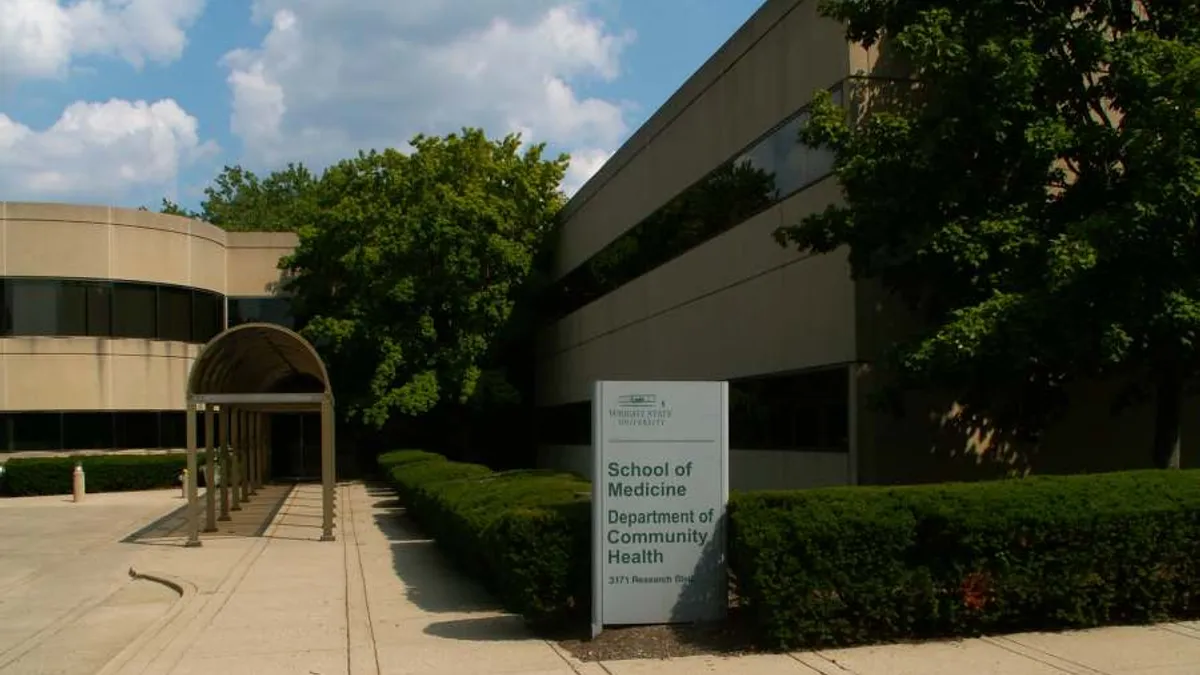Dive Brief:
- Wright State University's (WSU) deal with faculty that ended a 20-day strike provides for staffing continuity and "eliminates near-term operational risks" such as having to hire from a temporary faculty pool or change scheduling, Moody's analysts said last week in a client note.
- The five-year deal, which keeps salaries flat through June 2021 and provides for raises thereafter, also heads off the reputational risk that a prolonged strike may have caused, the analysts said. And it leaves WSU with spending flexibility to hold down costs after years of rickety finances.
- Colleges broadly could face more "contentious" collective bargaining and more strikes, the analysts said. At particular risk are institutions whose finances are under pressure from increased competition, shifting demographics, state funding cuts and constrained tuition pricing.
Dive Insight:
WSU faculty went on strike Jan. 22 after contract negotiations broke down over issues including workload, healthcare, furloughs and raises. Leading up to it was a growing financial crisis as the university's cash and liquidity diminished with declining enrollment.
A fact-finding committee set up to look into the dispute between faculty and WSU administration noted the university "is undergoing one of the most severe financial crises in the history of higher education in the United States." The crisis followed an enrollment decline of 12% from fiscal 2011 through fiscal 2017, a time when donations fell and healthcare costs increased. Moreover, international student enrollment fell by 23% in 2016 and by another 29% in 2017, dealing a $15 million "blow to WSU's budget," the committee noted.
The university's chapter of the American Association of University Professors (AAUP) rejected the fact-finder's report (which labeled various AAUP positions as "absurd") and protested the extra power it recommended giving to administration to eliminate faculty. "This would make tenure and continuing appointments meaningless — immediately," the chapter's executive committee wrote. "Any faculty member could be laid off." Faculty also protested, among other issues, two-day furloughs and a proposal to nix raises for the duration of contracts.
Going into the strike, the university had managed to improve its financial standing. After declining since 2011, WSU's operating cash flow margin hit bottom in 2016 at around negative 4% while its cash on hand hit bottom in 2017, according to Moody's. Since then, its cash margin has improved significantly, to about 8% in 2018.
Even so, maintaining financial performance will be a "challenge" for WSU in the face of expected enrollment and tuition revenue declines, Moody's analysts said. They also pointed out the new contract, which included some concessions to faculty (such as pay raises starting in 2022 and a reduced furlough option), will help WSU keep "rebuilding its financial footing after a period of significant strain."
WSU may be the first of many colleges to face more acrimonious negotiations with faculty. As Moody's analysts noted, cost-cutting efforts by administrations dealing with enrollment and revenue declines are "in conflict" with employees' interests in securing raises and more benefits.











